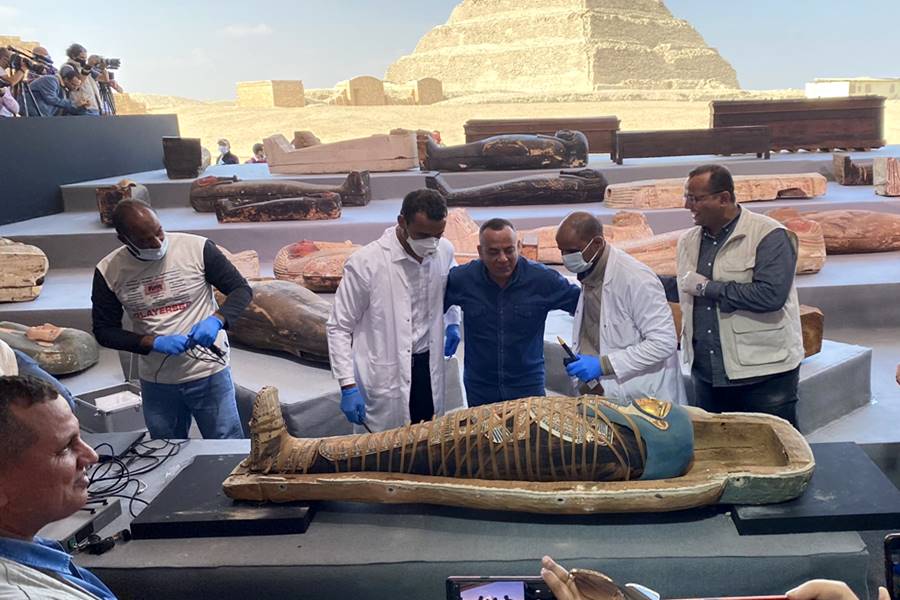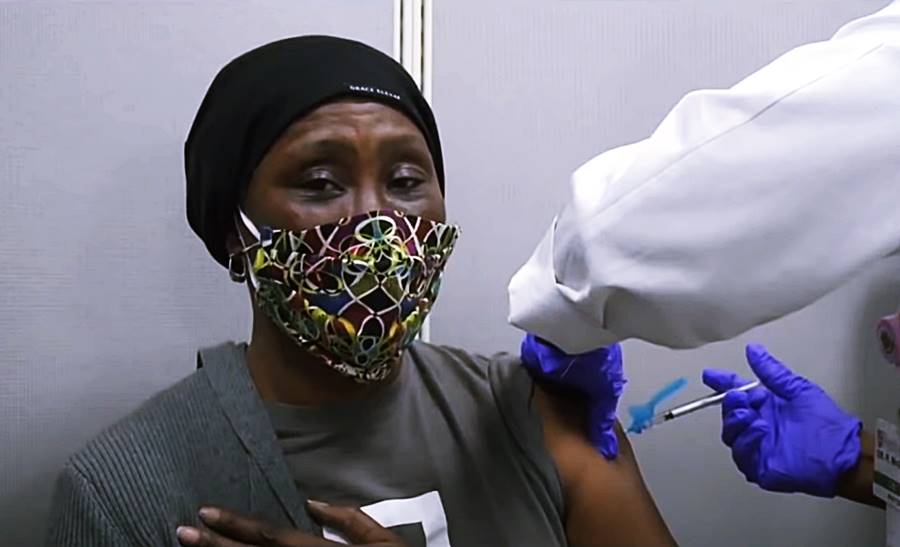Fri 25 December 2020:
Each of us sometimes is Mr. Jekyll and sometimes Mr. Hyde. We experience a range of feelings and emotions throughout our lives. Unfortunately, they are not always pleasant; some are so-called ugly feelings such as anger, jealousy, or irritation. Life goes on, and we move on. So do our emotions and feelings. They are connected with the situation, people around, and many others, not necessarily apparent factors such as chemistry in our body. This article will explore the chemistry of the hidden reasons behind our negative emotions and behaviors.
Chemical brain’s shake
Humans are very complex creatures, which consists of various compounds. One of the factors that determine who we are and how others perceive us is emotions. They are the driving mechanism of our existence. How can we define them? Feelings can be described as specific reactions of the human body to events or situations that make people feel and behave in particular ways.
They relate to different functions, processes, and meanings
[1]. For example, suppose we are having a good time with our friends. In that case, the emotions we are probably feeling are happiness, joy, or satisfaction. Emotions can also be defined as a sort of biochemical brain activity resulting in the change of behavior or/and perception of a particular event [2].
These activities and their regulations depend on many factors and substances, including compounds produced by our endocrine system called hormones [3]. They are released directly into the human bloodstream after receiving specific stimuli, and it causes a particular body reaction [4].
Hormones are produced by different organs. For example, the pineal gland produces melatonin (sleep hormone) [5] or the pancreas, which is responsible for insulin production (enables sugar digestion)[6]. Here, we concentrate on hormones linked with such unpleasant feelings as aggression, anxiety, and jealousy [7].
Adrenaline and Cortisol
Most of us, during important life events like exams, public speaking, is accompanied by fear and stress. These feelings are often signaled to our body by sweaty hands, nervous eyesight, and rapid heartbeat. In fact, that is what hormones like adrenaline and cortisol are responsible for [8-10].
They provide us with extra energy, which appears in our bloodstream just several minutes after a stressful event resulting in a specific body reaction. They are produced by the adrenal glands, which are located on the top of the kidneys. While adrenaline is mainly produced during stressful events, cortisol accompanies us for almost the whole time. For example, it plays an essential role in the memory formation process.
You have probably seen at least one movie where police officers or doctors are put into a very stressful situation. In a wounded patient or a hostage situation, time speeds up. In the blink of an eye, the doctor performs a flawless operation, or the policeman fires three perfect shots, both of them have just saved the day. As it turns out, such scenes can be seen not only on TV screens. The situation we witnessed was nothing but a fight-or-flight response.

It is a biological reaction that allows us to act under the influence of strong emotions and maximize our body’s physical or intellectual potential. It is a result of the increased amount of cortisol and adrenaline in our bloodstream. On the other hand, they may cause more harm than good [11]. Persistently high levels of these two hormones can lead to anxiety, irritation, anger, or even impair our brains’ intellectual capacity. Moreover, it may result in damage to your body.
When you are running very fast, you get tired quickly, so you need to rest. When high levels of cortisol and adrenaline are present in your bloodstream, your heart is “running” very fast. Your body stays continuously alert. It does not have a break. It can result in various vascular, endocrinological, and neural diseases [12,13]. Therefore, we should rest regularly and get a good night’s sleep [14].
Testosterone
As you have already noticed, it often happens that two different hormones can perform the same functions. Another example is a combination of cortisol and testosterone. Many of us blame testosterone for aggressive behavior. It is responsible for the regulation of various sexual functions and competition [15].
While it is a male sex hormone, it can also be found in females. Man’s testosterone is produced by testicles in small amounts, and females testosterone is produced by adrenal glands and ovaries. The action of testosterone is multidirectional and serves both sexes, although in a slightly different way.

There are many myths that testosterone is the primary aggression source among men. Still, it turns out that the truth is somewhat different. The presence of testosterone is not enough to cause aggressive behavior. This hormone is mainly responsible for domination and competition. In evolution, aggression is positively associated with dominance. However, testosterone level may be affected by other forms of “biological dominance”, for example, by comparing who has a bigger car or who earns more money.
It suggests that people with violent behaviors can be accompanied by high testosterone levels. Still, the increased testosterone level does not result in aggression itself [16]. Despite the controversies around this topic, a weak positive correlation between aggressive behaviors and testosterone level can be established [17].
Cortisol and testosterone perform one similar function; those hormones play a part in jealousy. We usually feel jealous while being insecure about something or somebody. Sometimes we want to have things, and if we do not have them, it may lead to stress and create a challenge for us. Domination stimuli support our fights and challenges for things (testosterone) combined with stress (cortisol). As a result, we may feel that we want to have something and make sure it will belong only to us [18]. Remember, the next time you feel jealous about something, you know who to blame for it.

Summary
Emotions are individual, complex psycho-physiological processes. They are brain responses to subjective events and thoughts in the form of released hormones and chemicals. From the chemical point of view, hormones are substances, which play a crucial role in sleep regulation, influence growth, development, and are responsible for our mental state. High levels of testosterone are not directly linked to aggression and anger. These “bad sides” are mainly connected with hormones like adrenaline and cortisol, while testosterone is responsible for more dominant behaviors.
This article is a joint work between Ewa Klejman (Faculty of Chemistry, University of Warsaw), Agnieszka Pregowska (Institute of Fundamental Technological Research), and Magdalena Osial (Faculty of Chemistry, University of Warsaw) as a part of the Science Embassy project. Image Credit: Ewa Klejman
This article is a joint work between Ewa Klejman (Faculty of Chemistry, University of Warsaw), Agnieszka Pregowska (Institute of Fundamental Technological Research), and Magdalena Osial (Faculty of Chemistry, University of Warsaw) as a part of the Science Embassy project.
Bibliography
[1] Izard, C. E. (2007). Basic Emotions, Natural Kinds, Emotion Schemas, and a New Paradigm. Perspectives on Psychological Science, 2(3), 260–280. https://doi.org/10.1111/j.1745-6916.2007.00044.x
[2] Damasio, A. (2011). Neural basis of emotions. Scholarpedia, 6(3), 1804. https://doi.org/10.4249/scholarpedia.1804
[3] Butnariu, M. Sarac, I. (2019) Biochemistry of Hormones that Influences Feelings. Ann Pharmacovigil. Drug Saf. 1(1): 1001
[4] Hiller-Sturmhöfel, S., & Bartke, A. (1998). The endocrine system: an overview. Alcohol Health and Research World, 22(3), 153–164. PMID: 15706790; PMCID: PMC6761896.
[5] Zhdanova, I., Wurtman, J., & J. Lynch, H. (1997). Melatonin: A Sleep-Promoting Hormone. Sleep, 10(20), 899–907. https://doi.org/10.1093/sleep/20.10.899
[6] Wilcox, G. (2005). Insulin and insulin resistance. The Clinical Biochemist. Reviews, 26(2), 19–39. PMCID: PMC1204764 PMID: 16278749
[7] Ramirez, J. M. (2003). Hormones and aggression in childhood and adolescence. Aggression and Violent Behavior, 8(6), 621–644. https://doi.org/10.1016/s1359-1789(02)00102-7
[8] Harvard Health Publishing. (2018, May 1). Understanding the stress response – Harvard Health. Retrieved December 14, 2020, from Harvard Health website: https://www.health.harvard.edu/staying-healthy/understanding-the-stress-response
[9] García-Sáinz, J. A. (1995). Adrenaline and its receptors: one hundred years of research. Archives of Medical Research, 26(3), 205–212. Retrieved from https://pubmed.ncbi.nlm.nih.gov/8580669/
[10] Lee, D. Y., Kim, E., & Choi, M. H. (2015). Technical and clinical aspects of cortisol as a biochemical marker of chronic stress. BMB Reports, 48(4), 209–216. https://doi.org/10.5483/bmbrep.2015.48.4.275
[11] McCarty, R. (2016a). The Fight-or-Flight Response. Stress: Concepts, Cognition, Emotion, and Behavior, 1, 33–37. https://doi.org/10.1016/b978-0-12-800951-2.00004-2
[12] Colao, A., Boscaro, M., Ferone, D., & Casanueva, F. F. (2014). Managing Cushing’s disease: the state of the art. Endocrine, 47(1), 9–20. https://doi.org/10.1007/s12020-013-0129-2
[13] Yao, B., Meng, L., Hao, M., Zhang, Y., Gong, T., & Guo, Z. (2019). Chronic stress: a critical risk factor for atherosclerosis. Journal of International Medical Research, 47(4), 1429–1440. https://doi.org/10.1177/0300060519826820
[14] Publishing, H. H. (2020, June). In search of sleep. Retrieved December 14, 2020, from Harvard Health website: https://www.health.harvard.edu/womens-health/in-search-of-sleep
[15] Eberhard Nieschlag. (2006). Testosterone : action, deficiency, substitution. Cambridge: Cambridge Univ. Press.
[16] Christopher Mims. (2007, July 5). Strange but True: Testosterone Alone Does Not Cause Violence. Scientific American. Retrieved December 14, 2020 from https://www.scientificamerican.com/article/strange-but-true-testosterone-alone-doesnt-cause-violence/
[17] Book, A. S., Starzyk, K. B., & Quinsey, V. L. (2001). The relationship between testosterone and aggression: a meta-analysis. Aggression and Violent Behavior, 6(6), 579–599. https://doi.org/10.1016/s1359-1789(00)00032-x
[18] Maninger, N., Mendoza, S. P., Williams, D. R., Mason, W. A., Cherry, S. R., Rowland, D. J., Schaefer, T., Bales, K. L. (2017). Imaging, Behavior and Endocrine Analysis of “Jealousy” in a Monogamous Primate. Frontiers in Ecology and Evolution, 5. https://doi.org/10.3389/fevo.2017.00119
Article originally Published in Technology.org CLICK HERE
FOLLOW INDEPENDENT PRESS:
TWITTER (CLICK HERE)
https://twitter.com/IpIndependent
FACEBOOK (CLICK HERE)
https://web.facebook.com/ipindependent
Think your friends would be interested? Share this story!




















